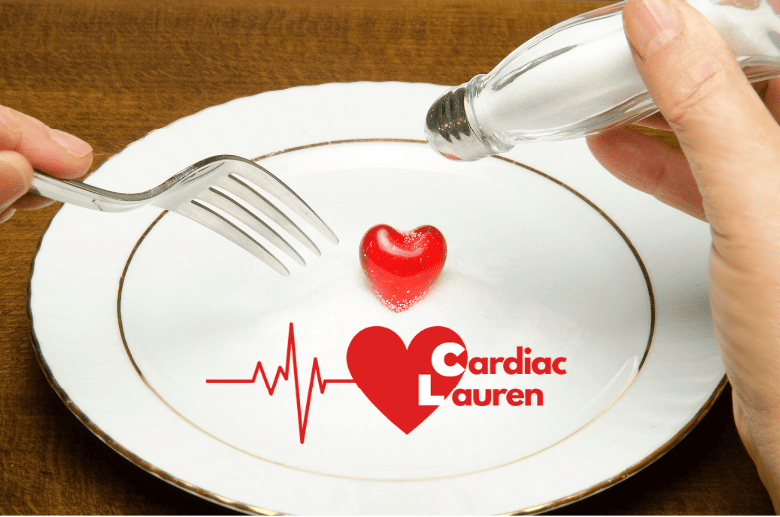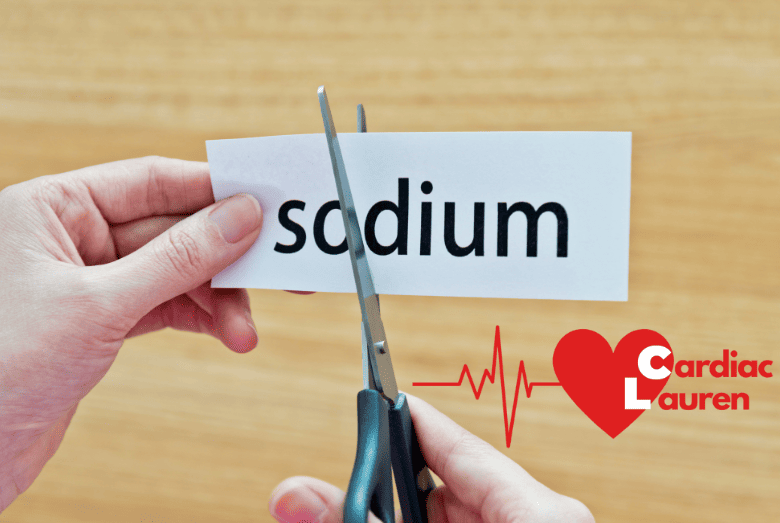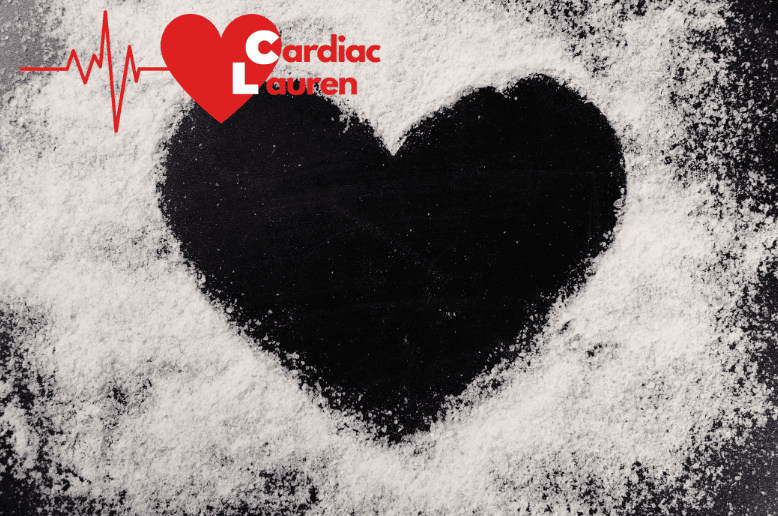Sodium – the mineral that is contained in our table salt – plays an important role in our overall health. It is needed in small doses to allow our muscles to contract and relax (otherwise leading to painful ‘cramps’ in our limbs) and maintain the balance of water and minerals in our bodies. It also conducts nerve impulses, so that the body can communicate information effectively and react to stimulus.

While sodium is a crucial component of our diets, it is important to know that large amounts of it can have damaging effects. Particularly with our heart health, too much sodium can put a strain on this vital organ.
Excessive sodium intake is strongly linked to high blood pressure (hypertension), which is a major risk factor for heart disease. It attracts water, leading to increased blood volume and pressure on the blood vessel walls. Elevated blood pressure puts strain on the heart and can contribute to the development of cardiovascular conditions.

As we have heard, sodium also plays a crucial role in maintaining proper fluid balance in the body. It helps regulate the amount of water inside and outside of cells, which impacts blood volume and blood pressure. However, excessive intake can disrupt this balance, leading to fluid retention and increased blood volume, again, contributing to increased tension on the heart.
Without proper knowledge of how to avoid excessive sodium, it can be difficult to stay away from the high salt-content foods that saturate our supermarket shelves. The World Health Organization recommends an intake of less than 5 grams (approximately 2g sodium) per person per day is recommended by WHO, but many foods, such as microwave dinners, will solely contribute to over half of an adult’s recommended daily intake of salt.
So: how can you manage your salt intake, to ensure that you are staying within a healthy salt limit?
We’ve written 7 top tips on how to banish excessive sodium and keep your heart healthy…
1. Read Labels and Choose Wisely
Start your salt intake management by becoming an informed shopper. Colour-coded nutritional information tells you at a glance if the food has high, medium or low amounts of salt. Opt for low-sodium or reduced-sodium versions of packaged foods whenever possible. Also keep in mind that sodium can hide in surprising places, such as sauces, condiments, and even bread.
2. Cook Fresh, Season Smart
One of the best ways to control your salt intake is by preparing meals at home using fresh ingredients. By cooking from scratch, you have complete control over the amount of salt added to your dishes. Experiment with alternative seasonings like herbs, spices, citrus juices, or vinegar to enhance flavours without relying solely on salt.
3. Limit Processed and Restaurant Foods
Processed foods, including snacks like biscuits; canned soups; and frozen meals, tend to be high in sodium. These convenience foods may be convenient, but they can also be a hidden salt trap. Whenever possible, choose fresh, whole foods over their processed counterparts. Similarly, be mindful when dining out. Many restaurant dishes are notoriously high in salt. Requesting lower-sodium options or asking for sauces and dressings on the side can give you more control over your salt intake.
4. Use Salt Mindfully
While reducing overall salt consumption is essential, you don’t need to completely eliminate it from your diet. Be mindful of the salt you add during cooking or at the table. Use less salt and gradually reduce the amount over time. Your taste buds will adjust, and you’ll begin to appreciate the natural flavours of foods without relying heavily on salt.
5. Boost Potassium Intake
Maintaining a balance between sodium and potassium is vital for healthy blood pressure levels. Increase your potassium intake by incorporating foods such as bananas, oranges, avocados, leafy greens, and potatoes into your diet. Potassium helps counteract the adverse effects of sodium, promoting a healthier cardiovascular system.
6. Be Wary of Hidden Sodium
Some foods that appear healthy can contain hidden sodium. Pay attention to condiments like soy sauce, salad dressings, and pickles, as well as processed meats like bacon, deli meats, and sausages. Choose low-sodium alternatives or consume these foods in moderation to keep your overall sodium intake in check.
7. Hydrate Wisely
Beware of certain beverages that can contribute to excessive sodium intake. Some sports drinks, flavoured waters, and even certain bottled juices may contain added sodium. Opt for water as your primary hydration source and read labels to choose low-sodium options if you’re looking for variety. Always drink water whilst participating in the Cardiac Lauren exercise videos.

Extra Information on Sodium
If you’re looking for a starting point on low-sodium cooking, the British Heart Foundation have a great range of recipes here.
The website Action on Salt also provides fascinating dissections of common UK brands and supermarket products’ salt levels. One useful article about sauces is here.
Of course, food is to be enjoyed and it is sometimes nice to indulge, however, your heart will thank you for being wiser about your salt intake. We hope that you have found this article useful.






